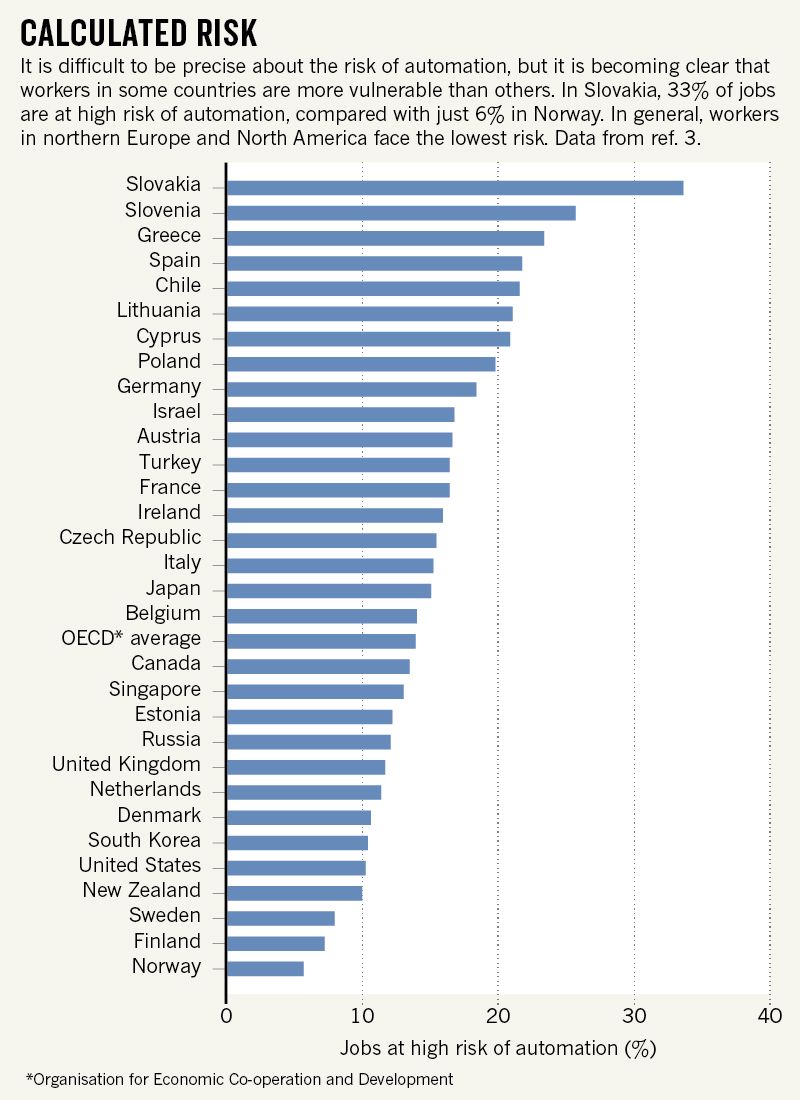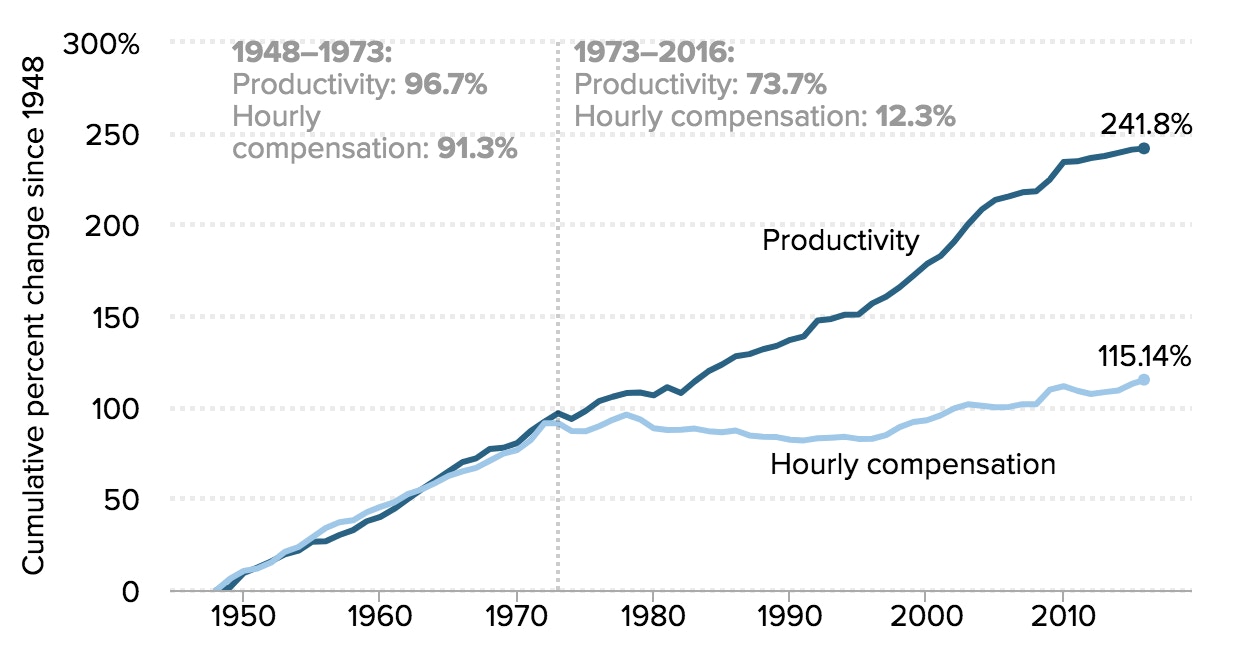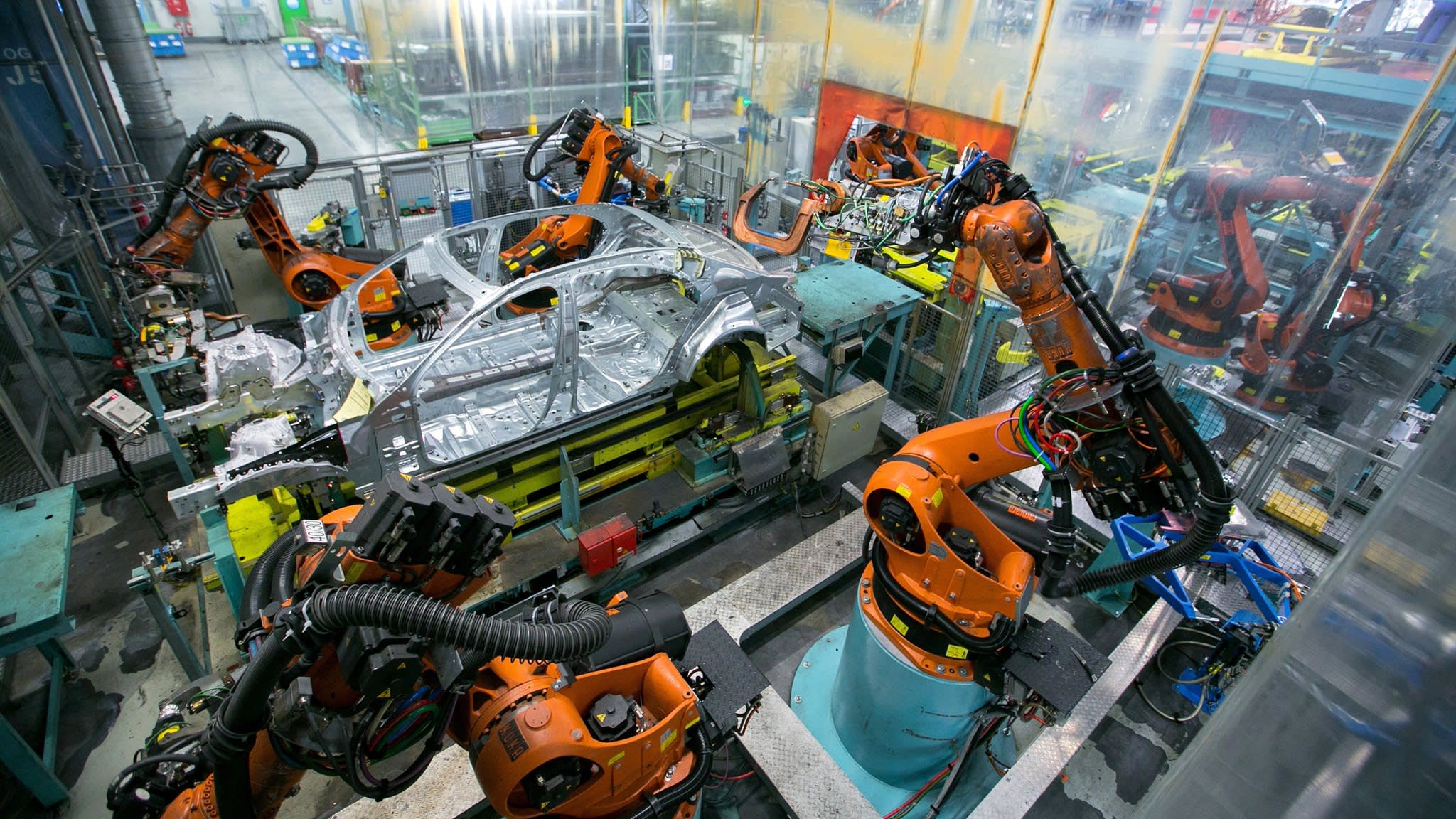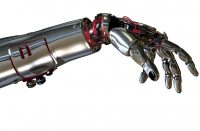What happens to labour when the ratio of jobs being created is dwarfed by the number of people entering the labour force?
The futurists look to an existence where automation and artificial intelligence—as opposed to just machines and robots—in a multitude of disciplines, such as complex medical diagnosis and autonomous truck-driving, replace human labour to such an extent that labour will not be in a position to reproduce itself, in the sense that the wage system of payment for work done will not suffice.
Their answer to this reality is to maintain that there will have to be a form of universal basic income to compensate those who would no longer have access to a sustainable wage level.
The large tech companies and their CEOs are pushing this agenda of a universal basic income to get ahead of any form of discontent with the automation process that is now taking place, and gaining pace, in work-places all over the globe. This filters through wider society and has stimulated debates on the merits of a UBI. (This topic has been dealt with a number of times in Socialist Voice, and so it is not to be the focus of this article.)
The implementation of a UBI within the existing system, just like the existing wage system, will be a construct of the capitalist class; and if that is the case we can only deduce that it will be instituted in the interests of the capitalist class.
Once again, forces on the left, when debating the merits of a UBI within existing society, are fully immersed in the capitalist agenda, and their conclusions and recommendations of a UBI can only be made within capitalist parameters; that is to say, no matter what rate of income is paid, the source will still stem from the exploitation of one class by another.
Where we have to differ in our understanding on current debates is on how we frame the automation of labour processes, and what its implications are for those of us who want to propose an alternative to capitalism and its internal contradictions.
Let us do a thought experiment to help us better understand the implications of automation for the working class. In a competitive market of a simple commodity—a pair of jeans, for example—taking as a start a fixed production process, where all producers have the same level of technology, and labour is intensive within the process, companies compete for the customers in the market.
An intensive struggle for market share ensues, and, aside from gaining brand loyalty, companies at this point can do one of two things to increase their market share.
Option 1: Intensify the exploitation of the workers: make them work longer hours, or reduce wages, benefits, and overtime, or move production to where wages are much lower. Option 2: Invest in technology and machines to increase the productivity of the worker. This competition drives companies towards monopoly and oligopoly markets, because there are greater profits to be made when there are only a few competitors, where companies become price-makers instead of price-takers, the barriers to entry erected are very high for new competitors, and collusion on pricing is easier to implement, overtly or covertly. The final goal of it all, of course, is to increase the share of profit going to the owners of the companies.
So, returning to our company producing jeans, those that have chosen either or both options above will have taken the lead in the market, and those that were too late to the party get left behind, unable to stay in operation because of the lower market prices of each unit and higher costs of production relative to their competitors. They close down, and those workers who were employed are made redundant.
Now, if we expand this process to a multitude of industries and services, the scenario begins to reflect the modern global capitalist system and the tectonic shifts taking place within it.
In general terms (and for simplification purposes), the labour-intensive industries have moved to the Global South, and the capital-intensive industries (machines, robots, automation, AI) have remained within the Global North. The services (tertiary) sector has become the dominant sector in the “northern” countries, while the production and manufacturing (primary and secondary) sectors are dominant in the “southern” economies.
In the capitalist system, the price of the product is related to the cost of the raw materials, the cost of other commodities that maintain and develop the production and distribution process, the cost of labour, extra costs (taxes, tariffs etc.), and the amount of profit that can be extracted from the sale of the goods or service.
We stated in previous articles that profit is a capitalist construct. It is derived solely from the ownership structures that exist from, the private ownership of the means of production, and from its ability to exploit labour and pay a form of wages that is not equivalent to the amount of work done.
The more labour-intensive an industry is the more profit can be extracted, because each individual worker is the source of surplus value—profit: adding more value to an item than what they are paid in wages. So when this is aggregated for an entire company, industry, or country, profit is highest in labour-intensive industries or areas, and the rate of profit declines in capital-intensive industries or areas.
The capitalist system drives, and is reliant on, the extraction of surplus value from labour in order for it to expand and accumulate even more surplus value. It is a spiral effect: the larger the spiral circles the less competitive the market and the more monopolies dominate economic activity.
The sad truth for those living in the Global South is that those manufacturing companies (usually indigenous to the region but contracted by large transnational companies of the Global North) that are competing with other manufacturers in the region will inevitably intensify and implement the innovations available, thus increasing the ranks of the unemployed—the reserve army of labour. With an abundant supply of labour it will be much easier to drive the already subsistence wage levels down even further. There is no catching up in the Global South with economies of the Global North—on the contrary, it is the economies of the Global North that will be brought down to the levels of the Global South.
The reality for those living in the Global North is that, with the majority of manufacturing industries being outsourced to the Global South (option 1), companies that remain must intensify technological innovations. We see this in the banking sector, the retail sector, the high-tech sector, the pharmaceutical sector, the public-service sector, the agricultural and food sector; just about every industry is subject to technological innovations in order to increase productivity.
This in itself is not a bad thing; but herein lies the capitalist illusion: that the working class without work will become better off and their interests will be looked after by private industry by means of a universal basic income.
Like every innovation in capitalist economies, profit is the motivating factor. This is what is driving automation and the development of artificial intelligence. Capitalists are investing heavily in these areas so that they can be implemented in others, in order to increase their productivity, to drive down prices, to subsume competitors, to increase market share, ultimately to drive up profits—a legal imperative in capitalist economies.

It is no coincidence that the implementation of these innovations is happening in the Global North, because the profit margins of companies operating there are much tighter than for those directing the operations of the Global South, extracting superprofits from the workers of that region.
This innovation is a double-edged weapon for labour, because innovation not only replaces human labour but also increases the reserve army of labour, driving wages and benefits down. However—and glaringly, for those who can see—the internal contradictions of capitalism will ensure another collapse of the capitalist system, resulting in misery for the working class once again.
How, with capitalists implementing options 1 and 2, will there be enough effective demand for the products to enable these companies to begin producing using automated systems? If this demand is not met there is overproduction, leading to job losses, leading to loss in tax revenue, leading to cuts, and so on.
Their answer is to create a universal basic income. But who will finance a UBI that will be high enough to allow every family to receive an income that will guarantee a decent standard of living? (And who decides the definition of a decent standard of living?) If tax revenue dwindles because of the decrease in job creation, the effects can be catastrophic for a country. We witnessed this at first hand with the results of a collapse of only one part of our economy (the building industry) and the knock-on effects this had on the whole economy.
If capitalism today cannot meet the needs of the majority of people on the planet, and in this country, where we have very low unemployment levels, then a UBI stinks of a red herring. The richest people and companies in the world are tax-avoiders. They are plundering our natural environment at a rate that may make it virtually impossible to ever undo the damage they have done in the relatively brief time in which they have operated. They exploit both our natural environment and human labour for their own benefit, and all decisions they make are made in their own interests.
We must not be mistaken: the capitalist agenda is privatisation, and implementing and popularising a UBI in this context is a tactic, an illusion, to undermine the need for public funds for our common needs, to open up our services to privatisation, i.e. the extraction of profit.
Whether we are discussing a UBI, automation, or AI, the real debate that has to be won should not be on the merits of each of these—whether it would have a positive or negative effect on citizens—because the change is coming: the debate needs to be centred on who owns, who controls, and ultimately who makes the decisions.
This, like other economic debates, needs to be steered away from the particular issue of debate and placed firmly within its class character: the ownership of the means of production.
Once again the capitalists create an illusion (UBI) that has leftists hook-line-and-sinkered into debating on capitalist terms, accepting the rationale of the private ownership of the means of production, leaving space only for debating the quantity of crumbs that are left to be distributed among larger and larger numbers of people. Can we trust them with such far-reaching implications for the value of our labour power? If they are in the process of replacing labour with automation and AIM (the number of jobs in OECD countries said to be at high risk within the next ten years is estimated at between 9 and 47 per cent), will they share their wealth to create a sustainable UBI?
We only have to go back to forecasts of the introduction of computers into the work-place, when there were great promises of the work load being halved, a four-day working week, shorter working day, extended days off, and more leisure time. While the productivity of labour has soared, pay rates have remained fairly stagnant, as can be seen from the graph. Though the reasons and the interpretation of this graph may vary, it is a clear and disturbing indication of the devaluation of labour power.
The value of labour power, for the capitalist, is wholly dependent on human labour for the creation of goods and services within the production and distribution process. If the capitalists can use machines, computers or robots to increase productivity without a proportional increase in wages, as has been the case since the 1970s, the widespread introduction of automation and AIM (automation for information management) into production processes will further erode the capitalist’s dependence on labour power, and so the gap between productivity and pay displayed here will only widen.

Furthermore, if surplus value is extracted from the exploitation of labour power, a question remains for the capitalist: how will we be able to retain profit margins when the source of profit—i.e. labour power—is being replaced by automation and AIM? Will this force companies to lobby for a wholesale lowering of wages? How will this then influence the effective demand for goods and services and therefore the real economy? Is the long-term agenda to create artificial organisms so that the reproduction process of automated labour is able to take place, leaving labour power redundant to various degrees?
The English anthropologist and geographer David Harvey writes: “The consequences of an intensification of capitalist competition in the market (including the search for relative surplus value through technological changes) produce deteriorating conditions of social reproduction for the working classes (or significant segments thereof) if no compensating forces or public policies are put in place to counteract such effects.”
Nothing in the history of capitalism points towards this ever happening voluntarily within the capitalist system—if anything, this process will ensure a permanent reserve army of labour, so that wage rates and UBI rates remain depressed on a global scale within the coming decades.
It is not a way forward to a bright new future that capitalism is trying to forge but a way back to a miserable existence for the mass of the people while a small elite bask in the bounty of leisure off the backs of labour.
“The robots are coming!” people say—but it’s not the robots we should fear, dismantle or destroy but the class who own the robots, who are developing automation and AIM, who are in total control of the livelihood of billions of people on the planet.
Only with a system of public ownership of the means of production can the true benefits and merits of automation, AIM or UBI be fully employed for the benefit of the majority of people. It is the class nature of society that we must change; but to do this we have to provide some road map of a way forward; and a token line about socialism at the end of this article will not suffice.
- The concluding part in this series on the Capitalist Illusion will delve more deeply into the socialist alternative, and how it is up to all class-conscious people to bring us on the journey towards a revolutionary transformation.






